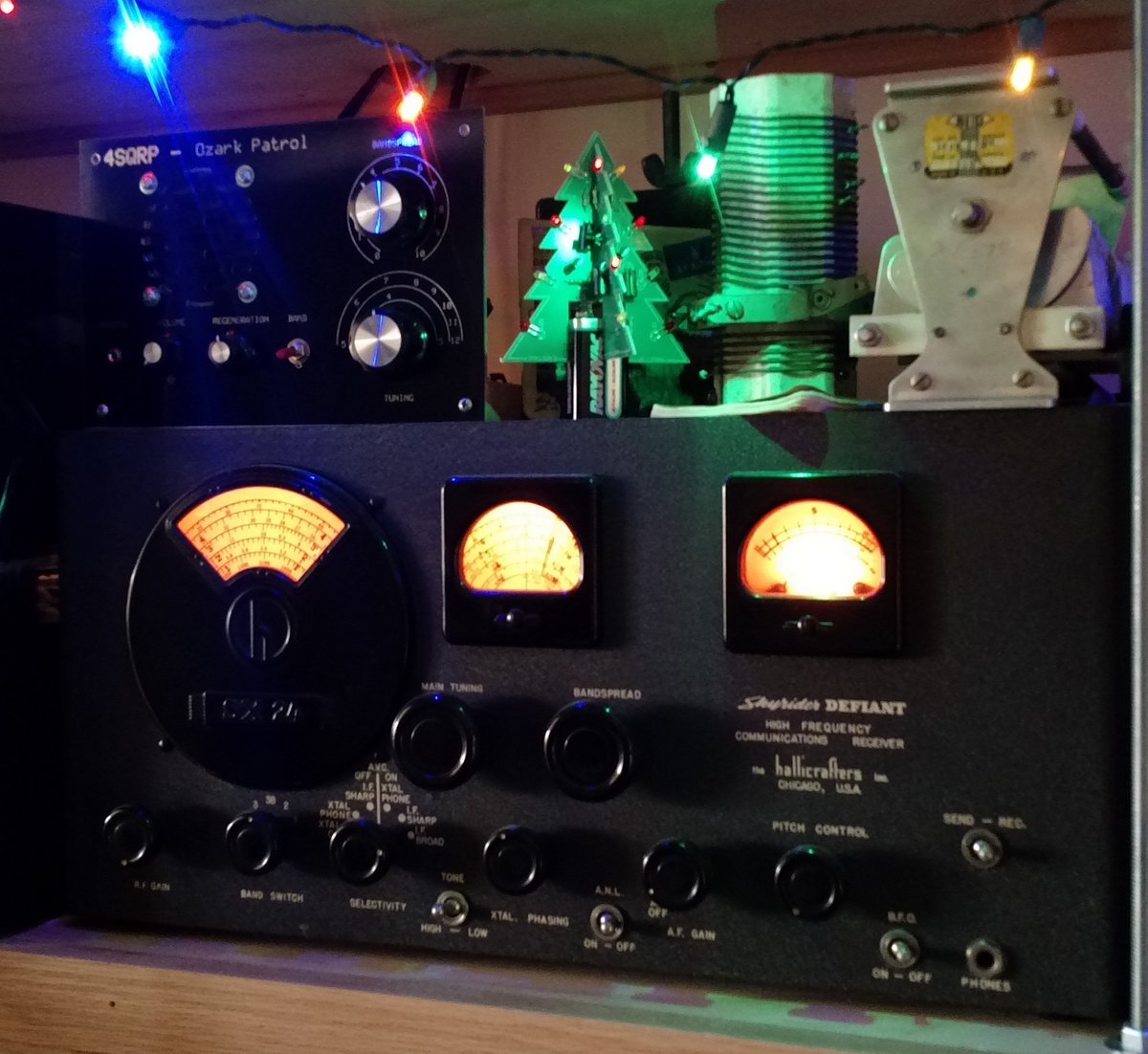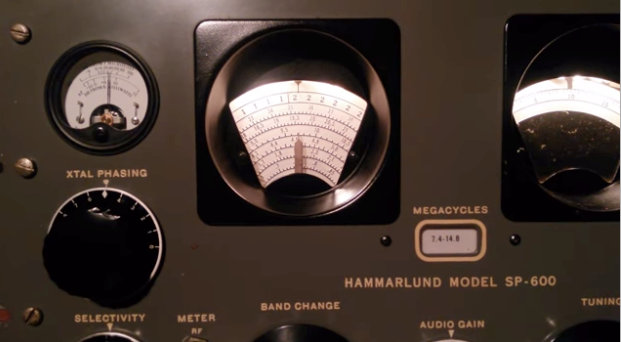Radio Waves: Stories Making Waves in the World of Radio
Because I keep my ear to the waves, as well as receive many tips from others who do the same, I find myself privy to radio-related stories that might interest SWLing Post readers. To that end: Welcome to the SWLing Post’s Radio Waves, a collection of links to interesting stories making waves in the world of radio. Enjoy!
Many thanks to SWLing Post contributors Tracy Wood, Michael Bird, Michael Guerin, Mike Terry and the Southgate ARC for the following tips:
AM Radio Transmitter Sites Now Valuable Real Estate for Logistics Industry (Transport Topics)
The familiar real estate adage “location, location, location” rings true these days for huge tracts on the outskirts of major cities — sites that for decades housed AM radio towers but that today command top dollar as e-commerce fuels rising demand for new warehouses and logistics centers.
Look no further than the $51 million sale of a five-acre parcel in Queens, N.Y., where an AM radio station will eventually abandon its existing tower and transmitter site, and move it.
New York radio station WFME’s owner, Nashville, Tenn.-based Family Radio, sold its AM transmitter site to Prologis, a San Francisco developer that specializes in building warehouses for companies looking to expand final-mile capability.
This property is situated near the Long Island Expressway, the Brooklyn-Queens Expressway, the Queens-Midtown Tunnel, and La Guardia and JFK airports. The spot’s current value as a logistics hub far outstrips its importance to a broadcast outlet that didn’t register in New York’s most recent radio ratings book.
“Long term, we see this as a strategic move that adds to our growing footprint of high-quality logistics space that offers quick and easy access to consumers.” said Jeremiah Kent, Prologis senior vice president of value added investments. “In one of the most densely populated markets in the world where demand for logistics real estate is high and land is scarce, Prologis is well-positioned to respond to the acceleration of e-commerce and consumers’ expectation for same- and next-day delivery services.”
The rising value of these locations is being driven by changing consumer habits and rapid technological evolution. Sites on the edge of town that in radio’s heyday were cheap and plentiful can now house vital links in a supply chain propelled by technology that was hard to imagine back in AM’s early days.[…]
USAGM CEO Names New Leaders for RFE/RL, OCB (VOA)
WASHINGTON – The U.S. Agency for Global Media announced that former VOA journalist Ted Lipien will return to run Radio Free Europe/Radio Liberty and Jeffrey Scott Shapiro, the current acting director at the Office of Cuba Broadcasting, will become director.
The appointments follow USAGM CEO Michael Pack’s December 9 announcement that former Voice of America director Robert Reilly would return to lead that network.
Lipien joined VOA in 1973 and worked as the chief of the Polish language service and later as a senior news and marketing executive until 2006. For 10 years, Lipien worked in Munich and Prague as the Eurasia regional marketing director, helping VOA and RFE/RL place programs on stations across the region. In an announcement sent to staff, he recalled listening to Radio Free Europe while growing up in communist Poland.
“I’m honored, and humbled, to be entrusted with helping this storied organization continue to break the hold of censorship and give voice to the silenced,” he wrote.
Since leaving U.S. broadcasting, Lipien has been a vocal critic of VOA’s and USAGM’s previous leaders. He has also defended Pack’s tenure as CEO, saying Pack has focused on correcting long-running issues of bias and mismanagement at the networks.
Radio Free Europe/Radio Liberty is a nonprofit multimedia broadcasting organization funded by U.S. Congress grants. Based in Prague, it serves as a surrogate media source in 27 languages, mostly in places where a free press remains either banned or not fully established.
Jeffrey Scott Shapiro has been with the Office of Cuba Broadcasting since July 2017. In announcing Shapiro’s new position, Pack cited his deep connections to local communities in South Florida and his track record in producing objective news.
“Transmitting objective news and information to the island plays a critical role in moving toward a free Cuba, and it is a privilege to be a part of such an important mission,” Shapiro wrote in a published statement.
The Office of Cuba Broadcasting oversees Radio and Television Marti, based in Miami, Florida. The network provides news, information and analysis to the people of Cuba via satellite television and shortwave radio, as well as flash drives, DVDs and text messages.
Pack was confirmed by the Senate as CEO in June with a three-year term and fired several news executives upon his arrival. He later declined to testify before a House of Representatives panel examining his decisions at the agency, including his decision to fire the heads of RFE/RL, Radio Free Asia and OCB, and replace their boards. The then-director of VOA, Amanda Bennett, resigned two days before Pack joined the agency.
Last month a federal judge granted a preliminary injunction prohibiting Pack and other USAGM officials from interfering with the editorial independence and First Amendment rights of journalists at VOA and other networks they oversee. The ruling still allows Pack to appoint leaders of those news networks to oversee them.
The November 20 court order prohibits the CEO and other defendants from communicating directly with journalists at the networks without the consent of their directors. The order is part of a lawsuit filed by five USAGM officials whom Pack placed on administrative leave in August. The suit accuses Pack and his political appointees of unlawful actions and of violating the First Amendment and a statutory firewall set up to ensure editorial independence. Pack has said the lawsuit is “without merit” and that all of his and his team’s decisions and actions are “correct and lawful.”
Earlier this month, a federal office set up to protect whistleblowers ordered USAGM to investigate allegations of wrongdoing by its own top officials.[…]
All new car radios to have digital terrestrial radio (Southgate ARC)
From today, people purchasing new passenger vehicles across Europe will be able to benefit from the advantages of digital radio – greater choice, clearer audio and enhanced data services.
Article 113, Annex XI in the EECC states that “Any car radio receiver integrated in a new vehicle of category M* which is made available on the market for sale or rent in the Union from 21 December 2020 shall comprise a receiver capable of receiving and reproducing at least radio services provided via digital terrestrial radio broadcasting”.
The regulation applies to all EU member states – regardless of the status of DAB in each country.
Despite the impact of Covid-19, Germany, France, the UK, Italy and Denmark have already introduced laws mandating digital terrestrial radio in cars and other countries are expected to follow shortly.
In the first half of 2020, over 50% of new cars sold in Europe included DAB+ as standard – a number that is expected to reach 100% by the end of 2021 as DAB+ adoption continues to grow across Europe.
More information and regular updates on the EECC directive and its implementation across Europe is available on the WorldDAB EECC factsheet.
*Motor vehicles with at least four wheels designed and constructed for the carriage of passengers
North Korean fisherman publicly executed for listening to foreign radio (The New Daily)
A North Korean fishing boat captain has been publicly executed for listening to banned foreign radio stations while at sea.
The man, only known by his surname Choi and said to have been in his 40s, was killed by firing squad in front of 100 boat captains and fisheries executives, according to a Radio Free Asia report.
Choi, who owned a fleet of more than 50 ships, is thought to have been turned in by a crew member after they turned against him.
According to the RFA report, Choi ultimately confessed to authorities and was charged with “subversion against the party”.
“In mid-October, a captain of a fishing boat from Chongjin was executed by firing squad, on charges of listening to Radio Free Asia regularly over a long period of time,” a North Korean law enforcement official told RFA.
“They publicly shot him at the base in front of 100 other captains and managers of the facility’s fish processing plants. They also dismissed or discharged party officials, the base’s administration and the security officers who allowed Choi to work at sea.”
The network said the fishing boat captain began his habit of tuning into foreign radio stations, including RFA, while serving as a radio operator in the military. He had listened to RFA – a US-government funded network that broadcasts in Korean – for 15 years.
“The security authorities decided then that the time to re-educate him had long past, so they executed him by firing squad,” the source said.
“It seems that the authorities made an example out of Choi to imprint on the residents that listening to outside radio stations means death.”[…]
Do you enjoy the SWLing Post?
Please consider supporting us via Patreon or our Coffee Fund!
Your support makes articles like this one possible. Thank you!








